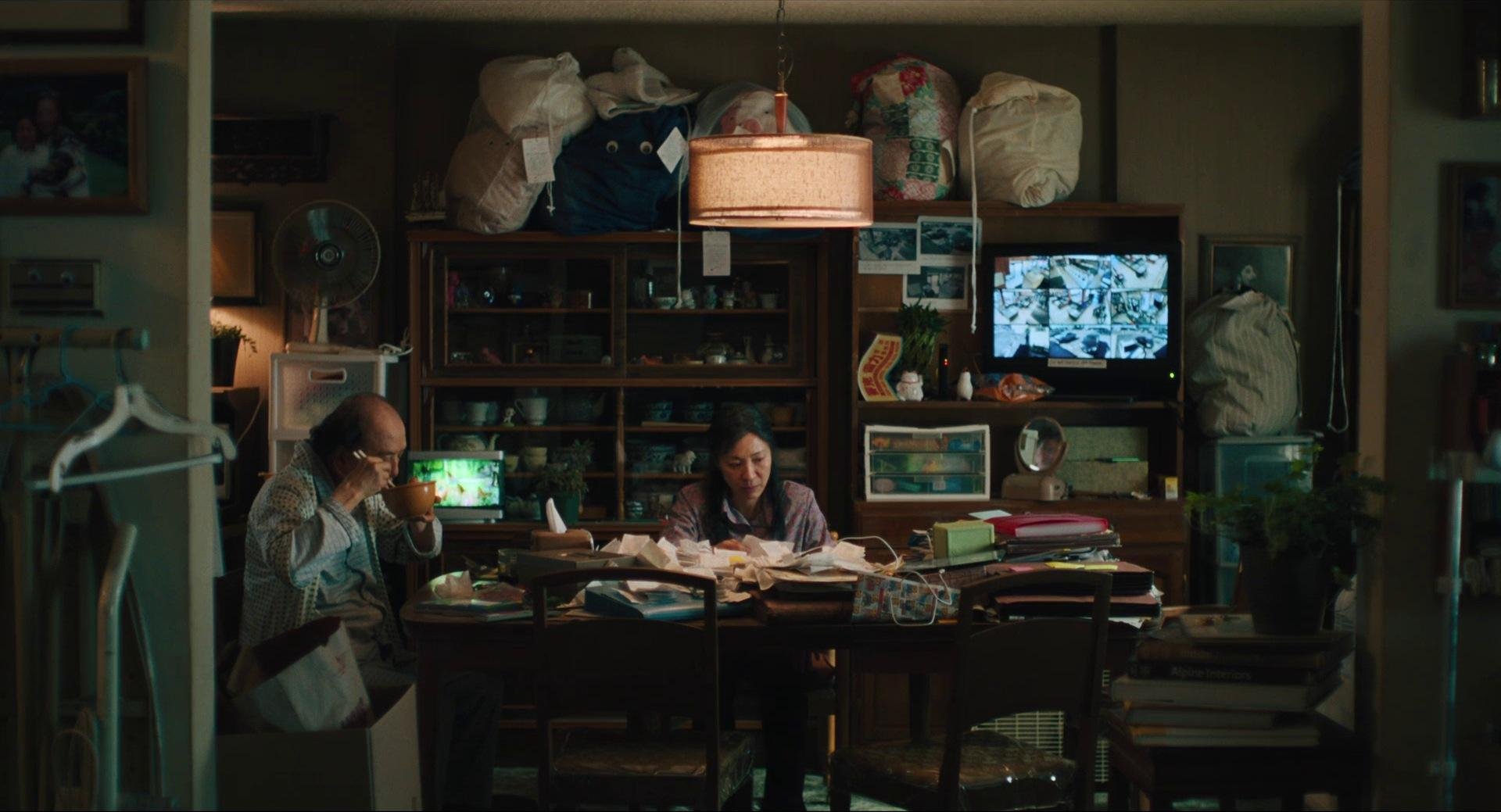Preview: The Transcendent Authenticity of “Everything, Everywhere, All At Once”
Everything, Everywhere, All At Once is the first movie I see in theaters since the start of the pandemic. Sitting in an empty theater on a monday morning in eastern Kansas, I watch two stories unfold: there’s the surreal, genre-bending narrative about Evelyn Wang reconciling the meaning of life and the splintered divide between generations of an immigrant family. Then there’s the second story, the one I’ve lived, my own cacophony of time and place triggered by the rapid-fire images on screen.
The lights go down and the movie begins on Michelle Yeoh—an actress I’ve admired ever since I was a little girl watching Wing Chun at kung fu camp, delighted by the prospect of a female martial arts star and following her career, not thinking twice about what seemed to me like a natural trajectory from Hong Kong kung fu movies to Hollywood Bond girl, eventually taking more elegant and matronly roles in Crouching Tiger, Hidden Dragon and Crazy Rich Asians, now entering her sixties and portraying a heroine that resembles my aunties or Nai Nai.
Evelyn sits at a table teeming with receipts and paperwork, in a set that could be drawn from my memory: the handsome cabinet in Nai Nai’s cozy apartment lined with photo albums and leather-bound volumes of English literature printed by Harvard University, a wooden rack of symphony and opera cassette tapes. Stacked in closets and tucked under her bed: bright plastic shopping bags from Chinatown—vibrant orange and hot pink—stuffed like pillows with lengths of fabric and skeins of yarn. Prying open tins of Danish butter cookies and Asian biscuits, only to discover spools of thread and delicate sewing scissors; or venturing into her refrigerator crammed with jars filled with sauces of different opacities, each seeping with their own fragrance and unrecognizable from their final form on the dinner table. The handsewn couch cushions with prints of sprawling blossoms and sheer curtains in the same shade of opulent red as lucky envelopes covering the looming windows.
Waymond approaches Evelyn to discuss their marriage, their conversation flows in a rhythm that resembles real life—not the typical code-switching between bilingual characters in Hollywood scripts—but instead, reaching for whatever word is most readily available, a quick staccato of English words or phrases that become their own punctuation. Their dialogue brings me back to family gatherings where I listen close, piecing together the content of the conversation from the random English words, deciphering what I could from voice tones and facial expressions.
Evelyn and Waymond are interrupted by their chiming rice cooker—a sound that has an almost-lullaby quality that is distinct to East Asian sensibilities and I hear the petite garbage trucks from my apartment window in Osaka, picking up PET bottles and burnable waste, announcing their presence in the neighborhood with a song in a way that only ice cream trucks would in America.
Evelyn opens the lid of the rice cooker and I can feel the rush of steam against my face, the thick, glutinous aroma of almost-cooked rice; Andy and I eagerly asking for extra servings at holiday dinners and the gentle chiding that rice is just filler—the bright vegetables and tender cuts of meat and fish displayed around the bubbling hot pot are the real food.
This is not the kind of representation I am accustomed to.
To read the full version of “The Transcendent Authenticity of ‘Everything, Everywhere, All At Once’” and access my library of short stories, craft notes, and e-books, join my story subscription program.
